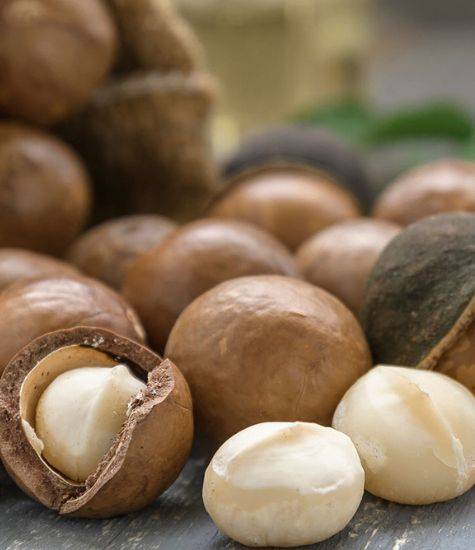Macadamia

Macadamia
Macadamia refers to several aspects, primarily associated with the macadamia tree, its nuts, and related products. The macadamia tree is an evergreen tree that can grow up to 40 feet tall. It has glossy, dark green leaves.
- Detail :100% Organic
- Email address :vincentaasir@gmail.com
- Phone number :+91 8220499403
Macadamia nuts are round or oval-shaped, with a hard outer shell that needs to be cracked to reach the edible kernel inside. The nuts are known for their rich, buttery flavor and smooth, creamy texture. Macadamia nuts are often consumed as snacks, used in baking, or included in various dishes. They're also a popular ingredient in chocolates and desserts.
Macadamia nuts are high in monounsaturated fats, which are considered heart-healthy. They provide a moderate amount of protein and dietary fiber.Macadamia nuts contain essential minerals such as manganese and thiamine.Macadamia nuts are enjoyed as a snack on their own. They are used in both sweet and savory dishes, including cookies, cakes, salads, and stir-fries.Macadamia oil, extracted from the nuts, is used in cooking and as a salad dressing.
In summary, macadamia refers to a genus of trees, the nuts they produce, and various products derived from these nuts. The nuts are not only delicious but also offer nutritional benefits, making them a popular choice in both culinary and snack applications.
| Property | Value |
|---|---|
| Scientific Name | Macadamia integrifolia (Smooth-shell type) or Macadamia tetraphylla (Rough-shell type) |
| Common Name | Macadamia Nuts |
| Color | Light cream to pale brown |
| Shape | Round to oval |
| Taste | Rich, buttery, and slightly sweet |
| Texture | Creamy and crunchy |
| Uses | Consumed as a snack, added to baked goods, salads, and desserts |
| Nutritional Content | High in healthy fats, particularly monounsaturated fats, and a good source of vitamins and minerals |
| Storage | Store in a cool, dry place to maintain freshness |
